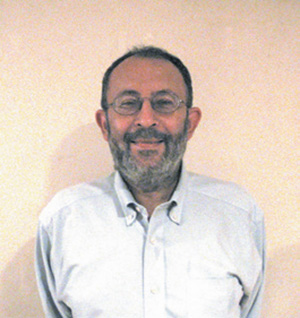
The Mishnah in the 10th chapter of Pesacḥim includes a set of Ma Nishtana. If one opens a standard Babylonian Talmud (Pesacḥim 116a), one sees four questions in the text of the Mishnah (matzah, maror, roast and dipping). But if one opens a standard Jerusalem Talmud, one sees three questions (dipping, matzah and roast). Is this one of those rare instances of a disagreement between the text of the Mishnah preserved in Babylonia and the text of the Mishnah preserved in Palestine?
It turns out that it is practically certain that the original text of the Mishnah recorded only three questions: dipping, matzah and roast. This is what the earliest and most reliable Mishnah manuscripts record. There is no distinction between a Babylonian Mishnah and a Palestinian Mishnah here. Moreover, if one looks at the text of the Mishnah recorded in the Rif and the Rosh, one sees that they too record a Mishnah that included only the above three questions. Also, Rambam utilized a text of the Mishnah that included only the above three questions.
Almost certainly, the familiarity of later copyists and early printers with the maror question from the texts of their Haggadah led some of them to erroneously insert the maror question into their texts of the Mishnah.
*
A widely quoted understanding of the Ma Nishtana takes the position that there were always four questions, and that the roast question did not survive after the Cḥurban, with the reclining question substituting for it. I just showed that there were originally only three questions. It also turns out that the roast question survived in some areas for 1,000 years after the Cḥurban.
Documents from the Cairo Genizah generally date from the 10th through the 13th centuries. This is roughly the period of the Haggadah fragments as well. Of course, not all of the Haggadah fragments from the Genizah span the Ma Nishtana section. But of those that do, many include the roast question.
Although most of the Ma Nishtana Haggadah fragments found in the Genizah record four questions the way they are asked today, we also find the following:
Several record three questions: matzah, dipping and roast, just like the original text of the Mishnah.
One records the following three questions: dipping, matzah and reclining.
Two record five questions: dipping, matzah, roast, maror and reclining.
Two record only the questions of dipping and roast. (There does not appear to be any reason why the matzah question would have been intentionally discontinued. These probably originate with a scribal error.)
One records only the questions of dipping and matzah.
*
I would like to focus on this last source, which is not a Haggadah fragment but is a section of an anonymous Geonic responsum that includes an outline of the procedures at the Seder. It can be deduced that the responsum was composed in Babylonia because it includes Avadim Hayinu, which was not a part of the Palestinian Seder ritual in this period. This responsum was first published by Louis Ginzberg, in his Ginzey Schechter, Vol. 2, pp. 258-60.
Shmuel and Ze’ev Safrai composed a monumental work: Haggadat Ḥazal. Here they write that the third and fourth questions are cḥaserot be-sof he-amud, implying that these questions were originally included in this responsum but were cut off. See Haggadat Ḥazal, p. 64, n. 53. (See also their later English adaptation, p. 65, n. 30.) They take this approach so that the set of questions in our responsum could then parallel the set of questions found in the other known Babylonian Geonic sources of the Haggadah text: e.g., Seder Rav Amram Gaon, and Siddur Rav Saadia Gaon. These sources record the standard four questions: dipping, matzah, maror and reclining.
But anyone can now view this responsum (Cambridge T-S Misc. 36.179) at genizah.org. It is clear that the third and fourth questions were never there. The first side ends with the last words of the matzah question, the next side continues immediately with Avadim Hayinu, and there are no missing lines in between. So this source records a two-question set in Babylonia. The idea that we have now been able to “excavate” such a set, evidence of a period before four questions became the universal practice there, is truly remarkable. On a paleographical basis, the responsum has been dated to the 10th century.
Regarding the issue of when the maror and reclining questions were added, the following are some reasonable observations:
The maror question probably arose after the dipping question lost its connotation as a maror question. Once this happened, it was viewed as necessary to add a question relating to maror.
The reclining question probably arose as a replacement to the roast question.
Probably a desire arose at some point to fix the number of questions at four, parallel to the themes of four cups of wine and four sons.
* The above is an abridged version of an article published in my book “Esther Unmasked” (2015).
P.S. I cannot leave this topic without the following diversion into the modern period. The Haggadah particularly resonated with the early kibbutznikim because they felt that they were like people who had gone out of Egypt. But they felt free to modernize the text. For example, at Kibbutz Ein Harod in the 1930s and 1940s, the Four Questions were: “Why do people all over the world hate Jews? When will the Jews return to their land? When will our land become a fertile garden? When will there be peace and brotherhood in the world?” For more on this topic, see M. Tzur and Y. Danieli, “Yotzim Be-Chodesh Ha-Aviv” (2004). This book includes extracts from hundreds of kibbutz Haggadot written between the late 1920s and 1960s.
By Mitchell First
Mitchell First can be reached at MFirstAtty@aol.com. He looks forward to creating his own Ma Nishtana questions someday.
For more articles by Mitchell First, and information on his books, please visit his website at rootsandrituals.org.









